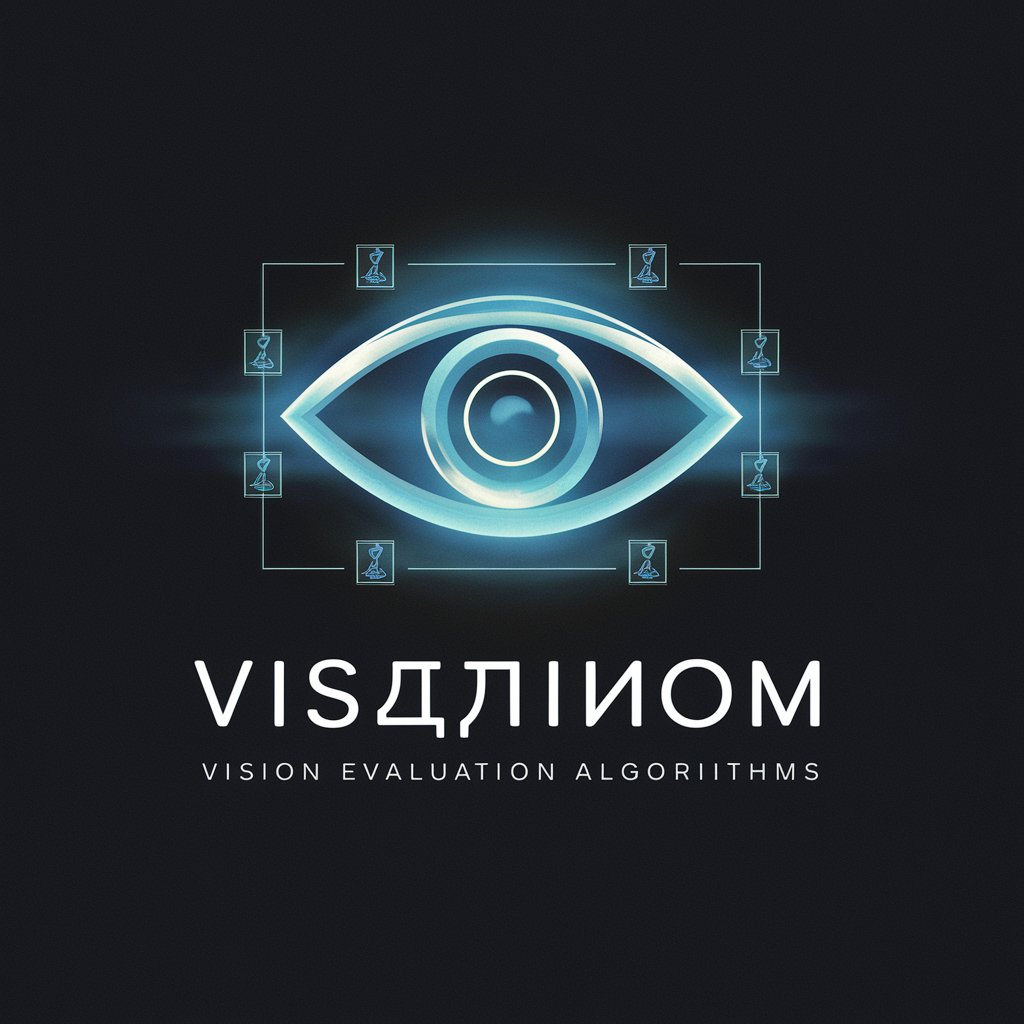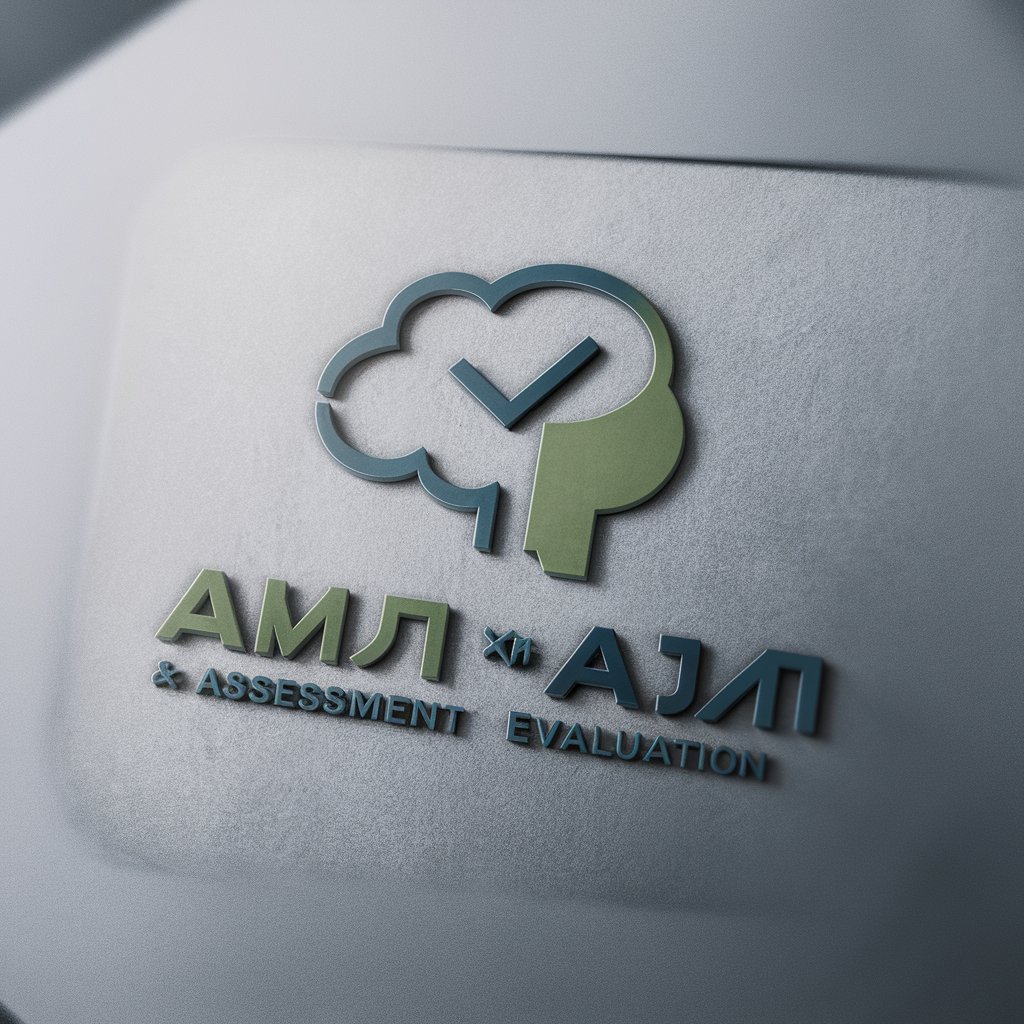
视觉评估算法 - Object Detection Evaluation

Welcome! Let's dive into vision evaluation algorithms and object detection metrics.
Enhance accuracy with AI-powered evaluation.
Create a logo for a vision evaluation expert specializing in object detection metrics...
Design a modern and clean logo for an algorithm expert focused on visual recognition and analytics...
Generate a logo that represents precision and advanced technology in vision evaluation algorithms...
Craft a logo incorporating elements of bounding boxes and mathematical precision for a visual data specialist...
Get Embed Code
Introduction to 视觉评估算法
视觉评估算法 is a specialized algorithm designed to assist in the evaluation of object detection models, a crucial aspect of computer vision. Its core functionality revolves around interpreting and manipulating bounding box data, which is essential for accurately measuring the performance of object detection algorithms. These bounding boxes can be in two formats: [xmin, ymin, xmax, ymax], representing the coordinates of the top-left and bottom-right corners, and [x, y, w, h], representing the top-left corner coordinates along with width and height. A significant focus is placed on the evaluation metrics, particularly the Intersection over Union (IoU) to calculate the accuracy of the detections compared to ground truth data. The algorithm emphasizes that each ground truth bounding box should match with at most one detection box, prioritizing matches based on the highest IoU scores to ensure precision in performance evaluation. Examples of its application include analyzing surveillance footage for object tracking, evaluating autonomous vehicle navigation systems, and improving accuracy in facial recognition software. Powered by ChatGPT-4o。

Main Functions of 视觉评估算法
BoundingBox Format Conversion
Example
Converting [x, y, w, h] format to [xmin, ymin, xmax, ymax] format for compatibility with various evaluation metrics.
Scenario
A user with bounding box data in [x, y, w, h] format needs to evaluate an object detection model that requires bounding boxes in [xmin, ymin, xmax, ymax] format. 视觉评估算法 facilitates this conversion, enabling seamless evaluation across different formats.
Intersection over Union (IoU) Calculation
Example
Calculating the IoU score between a detected bounding box and a ground truth bounding box to evaluate detection accuracy.
Scenario
In a project aimed at detecting and classifying vehicles in traffic, the algorithm calculates the IoU scores to assess the accuracy of detected vehicles against the manually annotated ground truth. This helps in tuning the object detection model for better performance.
Detection Matching and Evaluation
Example
Matching detection results with ground truth data based on IoU scores and evaluating model performance.
Scenario
For a retail analytics system that tracks product placements on shelves, 视觉评估算法 matches detected products with ground truths and evaluates the detection model's precision and recall, enabling retailers to enhance their inventory management.
Ideal Users of 视觉评估算法 Services
Computer Vision Researchers
Researchers focusing on developing or enhancing object detection models. They benefit from 视觉评估算法 by accurately evaluating and comparing different models' performance, leading to more effective and efficient improvements.
AI Product Developers
Developers creating AI-powered products, such as surveillance systems, autonomous vehicles, or retail analytics tools. They utilize 视觉评估算法 to ensure their products accurately detect and interact with their environments, enhancing user experience and safety.
Educational Institutions
Academic institutions teaching courses on computer vision, machine learning, and related fields. 视觉评估算法 serves as a practical tool for students to learn about and experiment with object detection evaluation metrics, bridging the gap between theoretical knowledge and real-world applications.

How to Use 视觉评估算法
Step 1
Visit yeschat.ai for a free trial without needing to log in, eliminating the requirement for ChatGPT Plus.
Step 2
Select the 'Object Detection Metrics' option from the main menu to start working with bounding box formats and evaluation metrics.
Step 3
Input your bounding box data in the provided format, either as [xmin, ymin, xmax, ymax] or [x, y, w, h], depending on your dataset.
Step 4
Choose the specific evaluation metric you wish to apply, such as Intersection over Union (IoU) or others, and provide any necessary parameters.
Step 5
Review the evaluation results displayed onscreen, including matched pairs of ground truth and detection boxes, and their corresponding IoU scores.
Try other advanced and practical GPTs
马丁的 Moring
Transformative AI for Your Daily Inspiration

橙橙 996好伙伴
Learn coding with a smile!

橙见
Unlocking Insights with AI-Powered Analysis

情绪日记
Harness AI to Navigate Your Emotions

MarkⅠ场景艺术家
Transforming visions into game environments with AI.

炼丹炉
Empowering insights through AI-powered image analysis.

瞪羚测试评估
Empowering high-growth enterprises with AI-driven assessments.

加權決策模型評估器
Empowering choices with AI-driven insights

癌症风险评估问卷
Empower your health with AI-driven cancer risk insights.

评估员
Empowering assessments with AI precision

计划策划评估专家
AI-driven insights for precision project planning

地理信息图谱评估师
Empowering geospatial innovation with AI.

FAQs on 视觉评估算法
What is 视觉评估算法?
视觉评估算法 is a specialized tool designed for evaluating object detection algorithms through various metrics like Intersection over Union (IoU), primarily focusing on manipulating and understanding bounding box data formats.
How does the Intersection over Union (IoU) metric work in this tool?
The IoU metric calculates the overlap between predicted and ground truth bounding boxes, dividing the area of overlap by the area of union. The tool sorts detection results by IoU scores, selecting the highest score for matching each ground truth box to ensure accurate performance evaluation.
Can I input bounding boxes in any format?
Yes, the tool accepts bounding boxes in two formats: [xmin, ymin, xmax, ymax] for coordinates of corners, or [x, y, w, h] for top-left corner coordinates with width and height. It seamlessly converts and processes these formats for evaluation.
What are common use cases for 视觉评估算法?
Common use cases include algorithm development for self-driving cars, surveillance system improvement, robotics vision systems, and any application requiring precise object localization and detection evaluation.
Are there any tips for optimizing the evaluation process?
To optimize evaluation, ensure your bounding box data is accurately formatted and clean. Use the tool's detailed analytics to iteratively improve your detection models based on specific metrics feedback.